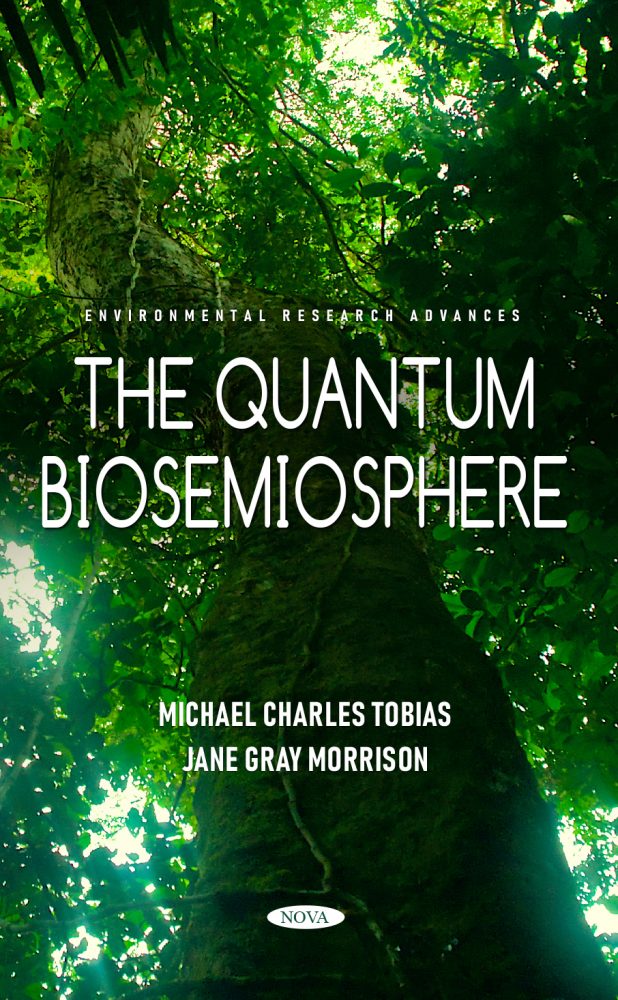 |
 |
 |
 |
|
The Quantum Biosemiosphere
By Michael Charles Tobias, PhD (Author) Jane Gray Morrison (Author) – Ecologist, Filmmaker
From Nova Sciences Publishers, New York
For Your Reading Interest:
https://novapublishers.com/shop/the-quantum-biosemiosphere/
“Michael Charles Tobias and Jane Gray Morrison have laid the groundwork for an entirely new theoretical and philosophical understanding of 21st century ecological dynamics. Their theories and entire narrative – as enshrined in The Quantum Biosemiosphere, are as revolutionary in their own eloquent, intricate way, as the early 20th century initiatives in math and physics that came to form the basis for our understanding of fundamental quantum mechanics and relativity.”
– Alexander N. Chumakov Ph.D., Professor, Lomonosov Moscow State University
Editor-in-Chief of “Age of Globalization” Journal Moscow, Russia
An Entirely New Understanding of the Biosphere
By Geoffrey Holland, writer for Transition Earth.
Let’s begin with a definition of the Biosemiosphere. It is a term most likely first coined by Susan Petrilli in an essay published in 2015, but most recently greatly expanded upon by Michael Charles Tobias and Jane Gray Morrison, authors of a new book from Nova Science publishers titled, The Quantum Biosemiosphere. It starts with biosemiotics, which refers to ‘the study of representation, meaning, sense, and the biological significance of codes and signs from genetic code sequences to intercellular signaling processes to animal display behavior to human semiotic artifacts such as language and abstract symbolic thought’.
The prologue of the new book by Tobias and Morrison states that ‘The Quantum Biosemiosphereimmerses the reader in the scientific, cultural and philosophical context and implications of human interaction with nature’. It is a transcendent way of being aware of and appreciating all the natural forces at work in our lives, seand also unseen. It reflects a waves and particles view of elementary life that requires a profound re-evaluation of the ephemerality and the abiding responsibilities to all other life forms of being human.
In order to appreciate the significance of the biosemiospheric perspective on life, as powerfully illuminated in this new book, we must first examine how humans have viewed their world since our first appearance as a distinct species something like 350,000 years ago. Our early existence is a well-known saga. It provides ackground context for the contemporary, and extraordinarily elegant eco-dynamic theories proposed by Tobias and Morrison.
For the initial 95% of existence, humans survived as hunter-gathers, with an unknown range of linguistic communicative skills. Stone-age humans were very much aware of the vast range of plants and animals with whom they shared existence. They saw themselves as part of a mystical weave that offered both opportunity and great peril on a daily basis. Survival favored those humans, who best employed their cognitive capacity to understand their reality; to use their knowledge to take advantage of opportunity and to avoid the risks that were part of life.

